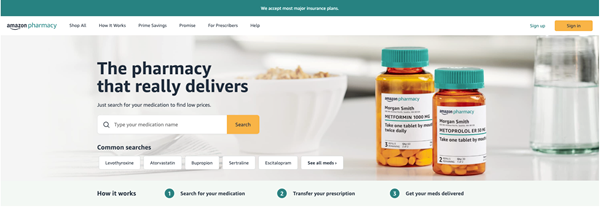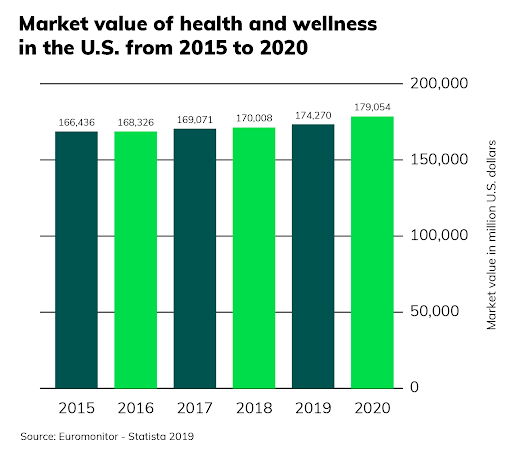
How to Create Moments that Matter
In the past few years, there has been a marketing evolution in the healthcare industry driven by consumer expectations. Consumers expectations have shifted for many reasons, but let’s examine three key drivers of change:
Now, health care providers must either respond or risk losing current patients — as well as potential new audiences. With more than 1 billion health-related questions pinged into Google every day, it’s clear individuals want to be invested in their health.
Below, we share solutions on how providers can navigate these new consumer expectations through marketing engagement efforts.
Acceleration of Competition
Patients are yearning for convenience and affordability, so traditional healthcare providers are now facing a field of new competition in retailers and telehealth. For example, CVS partnered with Buoy Health to support onsite healthcare at over 1,000 locations.
Additionally, they plan to transform 1,500 CVS stores solely into HealthHubs that will act primarily as an urgent care center with some retail space dedicated to health and wellness products. Amazon also now has a pharmaceutical branch, allowing consumers to order directly from their devices without ever having to drive anywhere.

How can providers encourage patients to engage with them over other easily accessible retail health solutions?
They must create moments that matter. Many practices have already reacted to changing attitudes through convenient hours and same-day appointments. But if they want to enhance the patient’s in-person experience, they need the additional layer of seamless digital experiences.
For example, providers can send SMS messages reminding patients and caregivers of health instructions as well as provide links to additional resources. This manages the patient’s fear of the unknown while increasing the confidence they have with their provider.
CRM is the engine that drives consumer trust, builds relationships and fuels growth — and it lets providers know when and where to establish meaningful moments throughout the patient’s journey. Offering personalized communication throughout the entire patient to caregiver to provider experience is something that a telehealth call or an urgent care center can’t recreate in the same way.
True connectivity across digital channels can develop relationships founded on loyalty; however, these touchpoints must have low barriers of effort level from patients, otherwise they won’t be as willing to engage in these moments.
Acceptance of the Wellness Economy
It’s more common to see someone wearing a FitBit or an Apple watch these days versus someone without it. More and more companies are entering the wellness economy — even Mattel has created a Meditation Barbie through a partnership with Headspace. The wellness economy has allowed companies to issue commercialized teaching and solutions outside of providers won’t stop springing up to address self-care, stress and wellbeing.

One way providers can combat this saturated market is by directly joining the space where other brands have a presence, social media.
Social media platforms should be embraced as a conversation provoker between providers and patients, along with campaigns created to drive brand awareness. Providers should not be wary of utilizing influencers. This is because many wellness brands who rely on influencers have faced a lot of scrutiny in recent years of promoting health products that have no legitimate backing.
The MERGE team recently helped a healthcare provider utilize social media to stay top-of-mind.
Our client wanted to share their commitment of whole-health philosophy. We helped them create a brand awareness campaign that utilized a 21-day hashtag challenge, featuring a calendar of physical and emotional activities.
Then, we worked with 27 diverse influencers to take the challenge, document their experience and encourage their followers to join. At the end of the campaign, there were over 1,100 pieces of content inspiring people to consider their health — and the healthcare provider's brand. We helped our client increase brand awareness by 50% and increase brand preference by 21% when compared to pre-campaign benchmarks.
A singular channel won’t necessarily convert a consumer to a brand, but through multi-channel touchpoints, like the ones described above, providers can generate moments that matter enough for patients to engage throughout the customer journey.
Rise of Consumer Empowerment
Dr. Google can answer any and all health-related questions. But is it accurate?
The accessibility of health information coupled with the fact that major health screening appointments have decreased rapidly since 2020 — breast and cervix cancer screenings by 94% and colon cancer screenings by 86% — reveals that providers must become more prevalent as consumers continue to seek self-empowerment. This connection should run parallel to one another.
One way is to take back the “Dr. Google” hat is to provide credible solutions that help people accurately check their symptoms and support them with real results. This could be done through an app or even an online portal that patients and non-patients alike can access.
Consumer expectations and empowerment is also driven by other categories outside healthcare. For example, the ease of the Starbucks app that rewards their loyal consumers and the personalization of Spotify that celebrates consumer’s habits are marketing tactics that providers should bring into their own sphere of consumerism. Patients no longer want to wade through frustrating touchpoints that bar them from accessing the care they need.
But creating these types of experiences require data-driven planning that not only fosters personalization, but also provides empathy from providers to their audience. Having strong data integration illustrates the complete picture of the consumer. Providers should use this data to better understand where their consumers are in terms of their customer journey and patient journey.
Through data, providers can identify niche audience segments, utilize sophisticated National Provider Identification (NPI) targeting and determine treatment behavior to ensure patients are covered and taken care of properly. This creates synchronization between the patient and the staff — and even takes the burden off the staff so they can focus solely on the care.
MERGE has expertise in spreading the art of healing with providers. Contact us today to build better connections with patients, create effective digital platforms and ultimately improve the patient experience.
Taylor Heussner
The original version of this page was published at: https://mergeworld.com/insights/merge-insights/navigating-the-patient-provider-relationship
We are an award-winning marketing services firm that merges storytelling and technology to bring health, wealth and happiness to the world. People come to MERGE looking for a new way; for ideas and... Read more
What is Synthetic Media and why is it important? MERGE CMO Ethan Whitehill recently sat down with Ian Beacraft, CEO and Chief Futurist for Signal and Cipher, to examine the emerging ...read more
- Designing for accessibility is building digital content that can be used by people who may have disabilities. Disabilities could range from being visual like color blindness, ...read more
Part I of MERGE’s seven-part series on omnichannel marketing takes a look at what omnichannel is, how we define it and offers a preview of the critical components for building ...read more
95% of both B2C and B2B executives say they believe their customers are changing faster than they can change their businesses. (Accenture, Life Trends 2023)So how are you keeping up?In ...read more